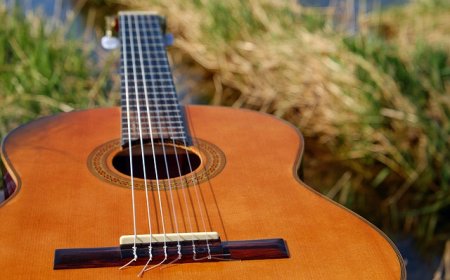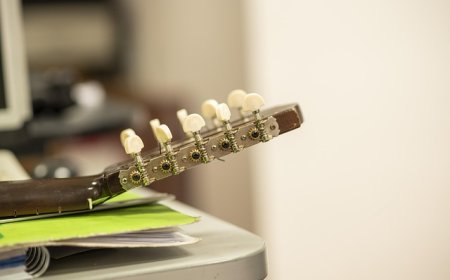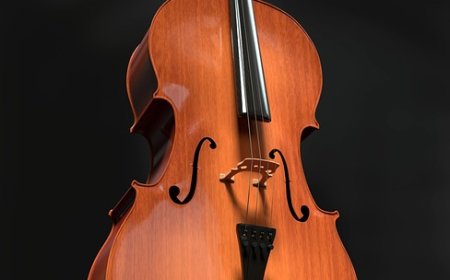Koto Facts for Students the Traditional Japanese Harp
Learn all about the koto a traditional string instrument of Japan with 13 strings. Explore its history, parts, how it’s played, famous musicians, and more
🎼 All About the Koto
🥇 Introduction
The koto is a large, elegant string instrument from Japan with a gentle, flowing sound. Often called the "Japanese harp," it lies flat on the ground and is played by plucking the strings with finger picks. It is Japan's national instrument and is often used in traditional ceremonies, school music education, and modern performances. With its calm and beautiful tone, the koto has become a symbol of Japanese music and culture.
🎶 What Is a Koto?
The koto is a plucked string instrument with a long, hollow wooden body and typically 13 strings, although some modern versions may have more. The strings stretch over movable bridges, which are used to change the pitch and tuning. Players use three picks worn on the thumb, index, and middle fingers to pluck the strings.
The koto produces a smooth, shimmering sound that can be slow and graceful or fast and lively. It is used in solo pieces, ensemble works, and even combined with Western instruments and styles.
🧩 Parts of the Koto
Each part of the koto plays an important role in making its sound:
-
Body (Ji) - A long, curved piece of hollow wood, usually made from paulownia
-
Strings (Gen) - 13 silk or nylon strings stretched across the instrument
-
Bridges (Ji or Kotoji) - Movable white pieces under each string that change pitch
-
Pegs - Located inside the body; used for tightening strings (in modern versions)
-
Finger Picks (Tsume) - Small picks worn on three fingers to pluck the strings
-
Left Hand Area - Where players press or bend the strings to change pitch or add vibrato
-
Sound Holes - Small openings in the underside that help amplify the sound
The strings are usually tuned to traditional Japanese scales, but players can adjust the bridges to explore many musical styles.
⚙️ How Does the Koto Work?
The koto works by plucking the strings using tsume (picks) worn on the fingers. The sound created by the pluck travels through the wooden body, which acts as a resonator to make the sound louder and warmer.
Players use their right hand to pluck the strings and their left hand to press or bend the strings to create vibrato, pitch changes, or gliding notes. The bridges are moved before playing to set the tuning.
Koto music can be very expressive, often reflecting the seasons, nature, and emotions. It's common in traditional settings but also used in modern film, pop, and video game soundtracks.
📜 History of the Koto
The koto has a long and noble history. It was introduced to Japan from China around the 7th-8th century, where it evolved from the Chinese guzheng. Originally used in royal court music, the koto later became part of samurai and noble families' cultural education.
By the 1600s, musicians began composing solo music for the koto. One of the most important figures was Yatsuhashi Kengyō, known as the "father of modern koto music."
Over time, the koto became more available to the public and was taught in schools. Today, it's performed both traditionally and in fusion genres with jazz, rock, and electronic music.
🥁 Famous Koto Players
These musicians helped shape the sound and legacy of the koto:
-
Yatsuhashi Kengyō - A blind musician who created the first popular solo koto music in the 1600s
-
Miyagi Michio - Modernized koto music and added 17-string versions
-
Tadao Sawai - Known for his innovative compositions and teaching
-
Kazue Sawai - A leading female koto artist and international performer
-
Masayo Ishigure - Brought koto music to international audiences in the U.S.
-
Miyama McQueen-Tokita - A modern performer blending koto with jazz and electronics
🎶 Learning to Play the Koto
Learning to play the koto can be peaceful and inspiring. Beginners start by:
-
Learning how to sit and position the koto correctly
-
Plucking the strings using three finger picks
-
Practicing simple scales and melodies
-
Moving the bridges to change the notes
-
Using the left hand to bend, slide, and shape the sound
Many Japanese schools include koto in their music programs, and it's also taught at conservatories around the world.
😄 Fun Facts About the Koto
-
The koto is Japan's national instrument
-
Traditional koto has 13 strings, but some have 17, 20, or even more!
-
The body is made from a lightweight tree called paulownia
-
Koto music often represents nature, like flowing water or falling cherry blossoms
-
It was once played only by nobles and samurai families
-
The left hand can bend and change the pitch while playing
-
Koto music is featured in anime, movies, and video games
👧 Kid-Friendly Summary
The koto is a beautiful Japanese instrument with 13 strings. You play it by plucking the strings with finger picks and sliding or pressing them with your other hand. It sounds peaceful and is used in songs about nature, seasons, and feelings.
📚 Vocabulary Words
- Koto – A traditional Japanese string instrument with a long wooden body and 13 strings
- Tsume – Finger picks used to pluck the strings
- Kotoji (Bridges) – Movable pieces under each string to tune the notes
- Paulownia – A light, strong wood used to make koto bodies
- Resonator – A hollow part that helps make the sound louder
- Vibrato – A shaking motion to make the note sound more emotional
- Yatsuhashi Kengyō – The father of modern koto music
- Scale – A group of musical notes arranged in a pattern
❓ Interactive Quiz (8 Questions)
1. How many strings does a traditional koto have?
A. 6
B. 10
C. 13
D. 21
2. What are tsume used for?
A. Tuning the strings
B. Cleaning the instrument
C. Plucking the strings
D. Moving the bridges
3. What is the koto’s body made from?
A. Bamboo
B. Oak
C. Paulownia wood
D. Maple
4. Which hand usually plucks the koto strings?
A. Left
B. Right
C. Both at once
D. Neither
5. What do the bridges on a koto do?
A. Make it louder
B. Tune the pitch
C. Decorate the strings
D. Cover the sound hole
6. What kind of sound does the koto make?
A. Loud and buzzy
B. High and squeaky
C. Smooth and peaceful
D. Deep and booming
7. What country is the koto from?
A. Korea
B. China
C. Japan
D. India
8. Who was an important early koto composer in Japan?
A. Tadao Sawai
B. Yatsuhashi Kengyō
C. Yo-Yo Ma
D. Takemoto Gidayū




















































